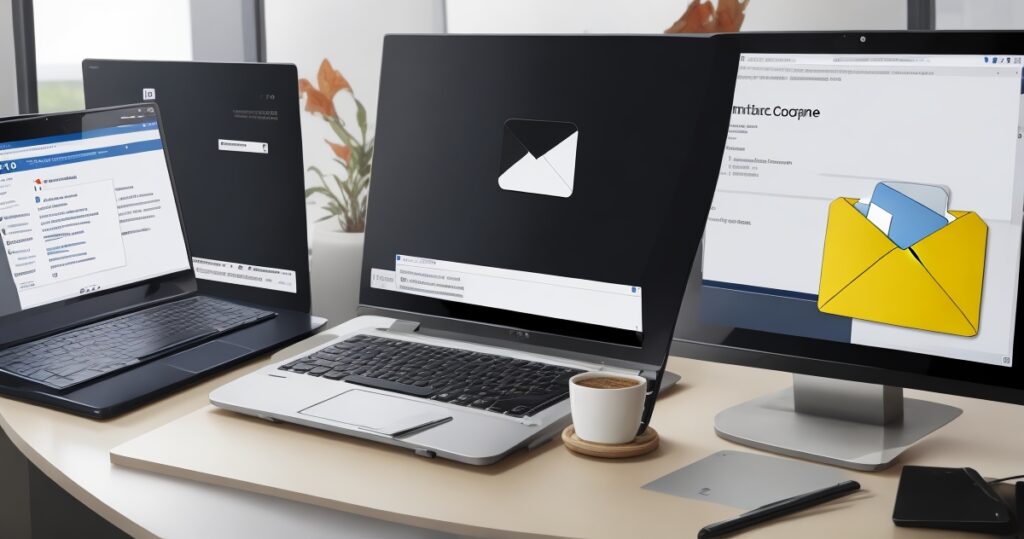Despite a lack of personal cyber-attacks, it is a dangerous belief that your business’s important data is safe. Cyber threats should be a topic of consideration as the financial ramifications have the potential to inflict unnecessary distress on SMB owners. It has become a noteworthy topic the idea for safeguarding your business around the world. The Australian Government has also begun implementing regulations as they understand the devastating effects it causes the citizens of this country. Significant concerns about cyber security, revolving around risks, have become difficult for SMBs to ignore especially in the years 2022-2023.
Acknowledging the inadequate defences of the business is the first step to overcoming the difficulties. It is within your power to take some personal precautions to prevent a catastrophic incident that could disrupt the business. It is important to discuss some potential risks that are currently disrupting the flow of business. After discussing the risks there will be a list of safeguards that can be implemented today to assist in preventing some cybersecurity attacks.
Five Modern Cyber Risks for Your Consideration
1. The compromised business email account:
The compromised business email account is an instance in which a criminal will gain access to valuable business correspondence. It can on occasion take the form of imitation. If a cybercriminal gains access to important business communications, they can also request payments to go to an alternative bank account which can sometimes be overlooked if it is requested from an email account of a trusted client.
2. Phishing:
A Phishing attack is a trick that can cause substantial disruption to your business. The criminal will use a fraudulent variety of methods to deceive business owners or employees in which they inadvertently can share important login information and details.
3. Ransomware:
Ransomware attacks will cause your system to be blocked until the criminals receive the desired payment requested. They infiltrate your device by secretly installing malicious software to take control and lock it down preventing your ability to use it for any usual function.
4. Insider threats:
Insider threats are exactly how they sound. It includes instances in which employees, contractors or co-business owners can accidentally or intentionally misuse access.
Betrayal within your business is entirely possible. It can be an accidental or intentional betrayal that causes a threat to the business. That threat can grow into a disastrous problem causing untold crippling damage which is in some cases irreversible.
5. Supply chain compromise:
A supply chain attack or compromise involves a criminal gaining access to a used account or device in the supply chain. Using this method they are effectively using someone in the supply chain to gain access to your business. From there they can usually cause excessive damage by using common methods outlined in the above examples or other alternative attacks.
Methods of Prevention Against Cyber Attackers
We will be discussing some of these important protocols in more detail but here we will have a brief consideration of some of the methods that can be used and are being used by many SMBs around Australia.
1. Backups and Incident Response
Have backups, especially for important information and prepare an incident response plan. To some, this may seem a little dramatic but there have been many incidents where people have wished they could go back and after problematic issues present themselves. It is better to backup, and have an incident response plan, being prepared is better than having regret. It has been said that within six months of a cyber-attack, 60% of SMBs cannot survive.
2. Security Tools
Keep your security tools updated frequently. This can include but is not limited to, security software updates, anti-malware, antivirus software, password manager applications, websites and other important applications that hold any important information that needs updating.
3. Cyber Security Training
Ensure that everyone in the business receives regular cybersecurity training. Keeping your knowledge current about the latest advancements in cyber-security with regular training can be extremely beneficial for employers and employees in SMBs. Having an active understanding of what prevents digital crime today will assist in avoiding foolish mistakes.
4. Technical Network Security and Endpoint Management
Organising, maintaining, and managing is important for all businesses. The access granted to certain parts of the business should be minimal. Employees should only have access to the parts of the business that are vital to them, and all other business information should be protected. There are various solutions to be considered and can be found online or by consulting an IT professional. Each business is unique meaning that one solution may work for some and careful attention to other businesses as they may need different attention.
Risk Initiatives that could be implemented right now!
Considering that a business can be exposed to harmful cyberattacks by criminals it requires a vigilant response to protect against these threats. The security of a business should be a priority and if there is financial gain, hackers will be trying to illegally profit from your success. As stipulated earlier in the consideration of these problems and solutions there are many vulnerabilities in a business but when these are exposed there are comparable measures that can ensure a strong layer of protection against arising issues.
In articles previously published on the PowerbITs website, there is free advice on the different practices that many small businesses are using or should be if the desired outcome is to prevent problematic instances such as loss of income and data theft.
A few suggestions that should be acknowledged that could help protect you today and moving forward are what we will consider.
1. Network Security
Using public or free Wi-Fi exposes you to significant risks. This is another method that can be used to steal your login information and important passwords. An unsuspecting employee or business owner could be the unfortunate cause of one of these tactics. A (VPN) or Virtual Private Network could be used to protect precious information as it encrypts the connection. Make sure you have a clear understanding of how to do this safely by consulting your IT department or an IT professional.
2. Data Backup and Recovery
Having backup servers or cloud-based solutions are two important ways for you to save your sensitive data and important information from being compromised or destroyed. It also ensures after an outage or attack you can be up and running more quickly. Particularly in Australia, we can be susceptible to harsh environmental factors such as fires and floods that could destroy offices and work equipment such as laptops and computers. Not only that but having a backup means if you are exposed to a ransomware attack that you cannot afford your digital information is safely protected externally so you can still access it if you have taken precautionary methods to ensure these backups are frequent and in a safe location.
3. Two-Factor Authentication (2FA)
Two-factor authentication or 2FA is an important security measure that many businesses are currently using. It is difficult for criminals to steal information and hack the SMB as it requires a person to use two methods to access an account. This has been discovered to be one of the most efficient technologies for defending against cyber criminals.
4. Anti-malware and Antivirus Software
A computer virus can affect a device and introduce some of the problems that have been outlined above. As this has become an increasingly damaging problem, IT professionals have worked hard on creating anti-malware and antivirus software. These efforts were made to protect the business from some of the cyber-attacks that cause disruption and financial losses to the business.
5. Employee Training and Awareness
Education in the business is important and making employees aware and training them to understand the best ways to conduct themselves in the digital landscape could save time and money. Cybersecurity attacks are constantly evolving meaning it is always important to be updated with the most recent information.
6. Regular Patching
It is important to do maintenance on devices and to regularly introduce security updates to the system. This is part of what regular patching includes and this is a vital step to protecting the business. Cyber attackers understand that those without regular patching are vulnerable. There is a greater chance that they will be able to gain access to devices that have not been patched as there will be significant vulnerabilities that will make it easy for intruders. Regular patching is just another important precautionary method that can keep the business safe.
Peace of Mind
The reason for disclosing this information is not to make you afraid but to inform you about the serious risks that may have been overlooked. It is impossible to put a monetary value on, peace of mind. Peace of mind is important, and understanding the risks and knowing how to protect the business against these real and potential problems could be extremely beneficial. As mentioned, there are quite a few options for how a business can protect itself however if you are not feeling confident about how to implement these options consider seeking professional IT advice from your IT department or the most educated member of your business who has the highest level of expertise when it comes to technology.
If the information considered here is overwhelming, do not hesitate to contact PowerbITs today for a free consultation. If you need to implement a higher standard of security and provide more adequate and updated safety precautions, this service may be of interest.










